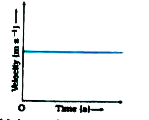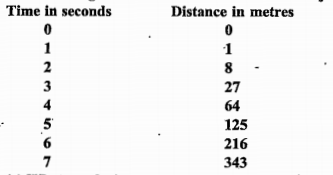An object is covering distance in direct proporiton to t3, where t is the time elapsed.
What might you conlcude about the force acting on the object?Solution in Punjabi
Step by step video & image solution for An object is covering distance in direct proporiton to t^3, where t is the time elapsed. What might you conlcude about the force acting on the object? by Physics experts to help you in doubts & scoring excellent marks in Class 11 exams.
Updated on:21/07/2023Topper's Solved these Questions
Similar Questions
Is it necessary to mention the direction of a vector having zero magnitude?
View SolutionName the device used for measuring the mass of atoms and molecules.
View SolutionIn which of the following examples of motion, can the body be considered approximately a point object:
View Solutionएक वस्तु द्वारा तय की गई दुरी t3 के अनुक्रमानुपाती है, जहाँ t समय है। उसके त्वरण एवं उस पर आरोपित बल के मान ज्ञात कीजिए ।
View SolutionA m On a stationary object of mass t The force was applied over time. t What will be the kinetic energy of the object after time?
View SolutionThe following is the distance time table of an object in motion

(a) What conclusion can you draw about the acceleration ? Is it constant increasing , decreasing or zero ?
(b) What do you infer about the forces acting on the object ?
View SolutionThe following is the distance-time table of an object in motion: What do you infer about forces acting on object?
View Solutionনির্দিষ্ট পরিমাণ বল স্থির অবস্থায় থাকা একটি বস্তুর ওপর প্রয়ােগ করলে t সময়ে বস্তুটি যে দূরত্ব অতিক্রম করে তা হল—
View SolutionA graph of velocity-time (v-t) for an object performing motion is shown, what would you conclude about motion of the object?

View SolutionIf the distance (s), covered by an object is directly proportion to the square of time (t). then the object .......
View SolutionThe following is the distance-time table of an object in motion:

What do you infer about the forces acting on the object?
View SolutionA graph of velocity-time (v-t) for an object performing motion is shown, what would you conclude about motion of the object?

View SolutionIf the distance (s), covered by an object is directly proportion to the square of time (t). then the object .......
View SolutionThe following is the distance-time table of an object in motion: (a)What conclusion can you draw about the acceleration ?Is it constant. Increasing decreasing ir zero? (b)What do you infer about the force acting on the object?
View Solutionઅચળ પાવર આપતા એક બળની અસર હેઠળ એક પદાર્થ સુરેખ પથ પર ગતિ કરે છે, તો t સમયમાં પદાર્થે કાપેલ અંતર ..... પર આધાર રાખે છે.
View Solution
